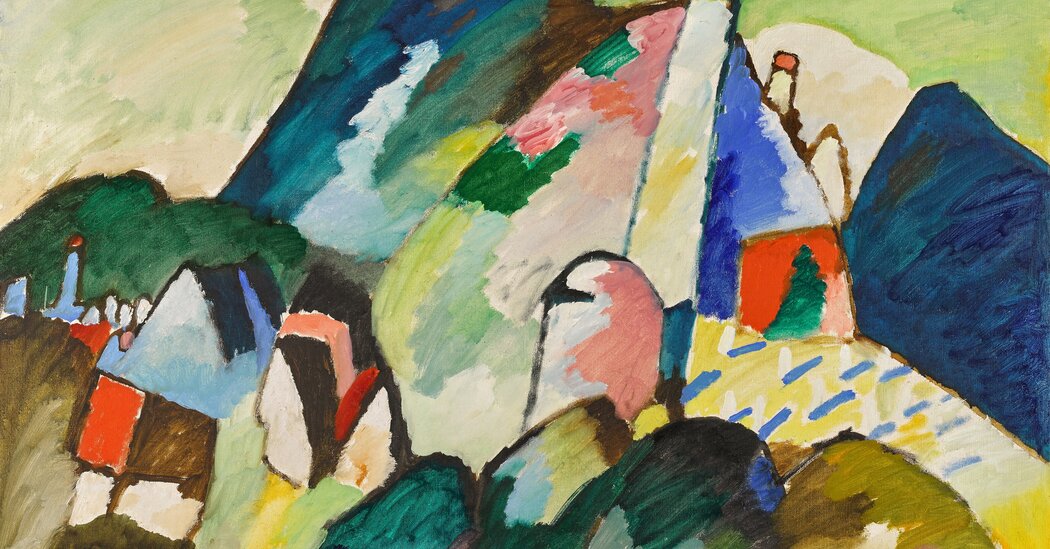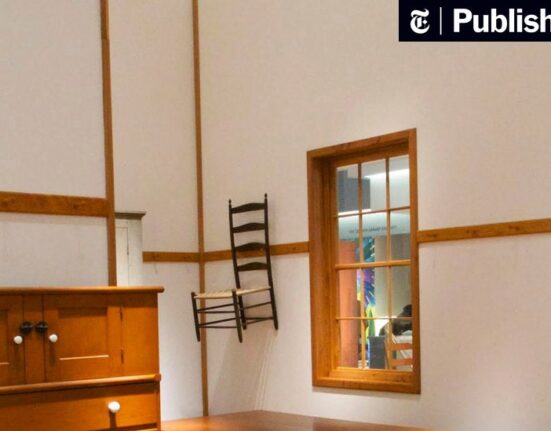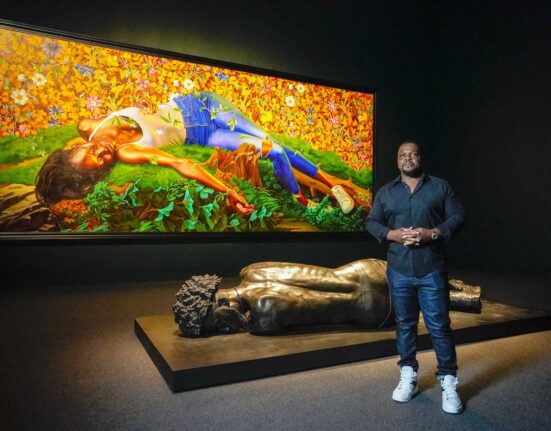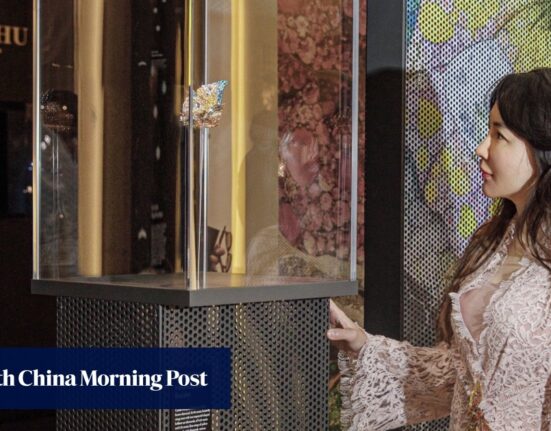Just five years ago, it was an art-world article of faith that fairs were the engine of the market. Serious collectors went on global art jaunts from Miami and Paris, to Venice and Basel, Switzerland, and attendance at elite art showcases could be counted on year after year.
TEFAF Maastricht, the European Fine Art Foundation’s annual March fair, marked the traditional celebratory kickoff to the spring season. It drew around 70,000 visitors a year, according to TEFAF data, to a Dutch city with cobbled streets, and Roman ruins and castles on the banks of the Maas River, for museum quality art and antiques, just as the tulips were beginning to bloom.
Covid changed all that, when TEFAF became the first fair in March 2020 to suffer the immediate impact of the pandemic, which would soon bring the entire cycle to a halt. It shut its doors halfway through the event, attendance dropped to 26,000, and some attendees went home infected with the virus.
Ever since, TEFAF and other fairs have faced a transforming marketplace, as Instagram and online art sellers like Artsy and Artnet threatened to displace physical showcases. It didn’t help that when Maastricht hosted its next in-person edition in June 2022, it suffered a jewelry heist in broad daylight.
As the 2024 edition of TEFAF opens to the public on March 9, the fair’s organizers and exhibitors hope to move past these vexing years, and prove that there’s no substitute for a real-life luxury fair, where visitors view objects and engage in discussions that will help guide their collecting choices.
“We know that the world has changed,” said Hidde van Seggelen, the fair’s chairman, who runs a gallery in Hamburg, Germany. “We felt for a while that online would be the solution, but we all know now that it is absolutely not. If you want to see the real thing, you have to come, and touch, experience, and talk to people. Art is a people business.”
Some 50,000 visitors are expected to arrive at the MECC convention center in Maastricht for the fair, according to TEFAF’s estimates, among them about 300 museum directors and 650 curators, as well as 30 or 40 museum patron groups. They’ll be able to visit about 270 exhibitors from 21 countries, prepared to showcase 7,000 years worth of art, jewelry, furniture and other treasures.
The high values of works headed to this year’s fair signal, to Mr. van Seggelen, that sellers are just as eager to participate. They include a Vincent van Gogh portrait priced at $4.95 million; Artemisia Gentileschi’s “The Penitent Magdalene,” for upward of $5 million; four volumes of John James Audubon’s rare book, “Birds of America,” priced at $12.5 million; and a Wassily Kandinsky painting offered by the art dealer Robert Landau at an undisclosed price, that will exceed $50 million, he said.
“TEFAF is still the biggest place of exchange for the world’s great museums, the top collectors and the best dealers,” said Mr. van Seggelen. “Travel has normalized and collectors are coming, and for that reason, people are bringing really top items to the fair.”
Will Korner, TEFAF’s head of fairs, said there’s no question that fairs need to prove their relevance to dealers, who are facing rising travel costs, as well as inflation, while also observing the success of online sales. Before the pandemic, he said, it was “assumed” that the best galleries would “do the big fairs in the big places,” but now TEFAF can’t take that for granted.
“We feel that we have to stay at the top of the game,” he said. “We cannot rest on our laurels, because the dynamics have changed for fairs. There is a smaller pool of galleries in the world that are absolutely amazing at what they do that have the time and resources to do fairs, and that’s affecting every fair now.”
War, political upheaval and scrutiny of the art trade over its handling of looted and colonial art, have also made fairs points of additional controversy. Mr. Korner has initiated the TEFAF Summit, on March 11, which will feature discussions on such topics with the World Monuments Fund, Cultural Emergency Response and the Netherlands’ Commission for UNESCO.
This year’s fair will be three days shorter than previous editions. Last year, TEFAF conducted a survey of its participating art dealers, asking what they would change, and more than three-quarters responded that the fair was too long.
“The clients or potential buyers show up for the previews, or the first day or the second day,” said Stephane Danant, co-owner of the Paris-based design gallery Demisch Danant. “We do only like 0.02 percent of our sales in that following week. I think one week will be much more efficient. The fact that it will be more dense, more concentration, will be better for the trade.”
Mr. Korner also felt it was important to establish a new draw for collectors who might be less familiar with certain artists or styles.
That led to the establishment of a new section, called TEFAF Focus, in which 10 galleries each set up a smaller stand devoted entirely to a single artist or concept.
London’s Bowman Sculpture gallery, for example, will create a booth at Focus that will be dedicated to Auguste Rodin sculptures, including a small version of his bronze “The Thinker,” one of six known casts the artist made from 1903 to 1914, priced at $7.5 million.
Attracting the right mix of new buyers and experienced collectors is crucial to keeping TEFAF relevant for years to come, Mr. Korner added. There’s no doubt that the big-ticket items are part of the appeal.
The multimillion-dollar Kandinsky, an abstract landscape, “Blick auf Murnau mit Kirche II,” or “View of Murnau with Church 2,” is likely to draw a crowd, both for its aesthetic appeal and for its extraordinary history.
Painted in 1910, it was part of a collection of Modernist paintings owned by the Jewish family of Johanna Margarethe and Siegbert Samuel Stern, but was looted by the Nazis (see sidebar).
For decades after the war, it hung in the Van Abbemuseum in Eindhoven, the Netherlands, before the Dutch state — after two restitution claims — returned it to the family’s heirs. They sold it at auction a year ago for about $45 million, to Mr. Landau. He said in an interview that he would not sell it for less than $50 million, but would not name his price.
“The Maastricht fair is very important to us, and it’s a beautiful fair; we’ve been going for 25 years,” said Mr. Landau. “We’re not taking the painting to Maastricht out of respect to Maastricht, we’re taking the painting to Maastricht out of respect for the painting.”
The New Orleans-based art dealer Bill Rau is bringing van Gogh’s 1884 portrait “Tête de Paysanne à la Coiffe Blanche” (“Head of a peasant woman with a white cap”), a portrait painted one year before one of his famous works, “The Potato Eaters,” and in a similar style.
Although he has never exhibited at the fair before, Mr. Rau feels that TEFAF is the best setting for him to offer the painting, because of the fair’s extensive vetting process.
“The amount of paperwork and research that they require us to bring is mind-boggling,” he said.
Mr. Rau said that he’s convinced that real-world fairs were still important to the market. “What I’ve discovered about TEFAF is that being there brings items much more prestige,” he added. “People say, ‘Oh, you’re going to TEFAF?’ In fact, we’ve already sold a number of pieces because we were planning to take them to TEFAF. So now we’ll have the chance to bring something else.”







